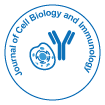Future Prospective - Immunological Investigations
Received: 30-Oct-2017 / Accepted Date: 31-Oct-2017 / Published Date: 31-Oct-2017
Introduction
Immunological investigations in sound and wiped out people have far reaching suggestions for pathogenesis, conclusion, visualization, treatment, and general wellbeing. Barely any fields have had a more extensive or more grounded effect on the investigation of pathogenesis, over all ranges of medication, than immunology. However, the atomic and cell premise of the vast majority of the clinical appearances of immunological infections has stayed tricky. The time has arrived when investigations of individual immunological conditions, and even of particular appearances in single patients, can give one of kind experiences into fundamental physiological instruments. The assorted variety of invulnerable related clinical indications is tremendous, considerably more extensive than foreseen when investigations of pathogenesis were in their early stages, with a consistently expanding range of irresistible, harmful, unfavourably susceptible, auto inflammatory, and immune system conditions. This assorted variety makes it particularly energizing to ponder resistance in people. It has described numerous guard components that oppose parasitism; however protection is just a single factor deciding the result disease. Protection from contamination is a property of host resistance, however differs for each irresistible specialist. Seriousness of malady is a property of an irresistible operator, however relies upon the host. The standards hidden these communications are best comprehended and connected through a comprehension of host and pathogen nature and co-development.
Immunology contains a multifaceted research plan that has created around the clinical difficulties of host protection, transplantation, autoimmunity, tumour immunology, and sensitivity. The physiological procedures interceding these clinical issues assign the insusceptible framework, which, is comprehended as far as building up and keeping up organismal character.
Thoughtfully, invulnerability relies upon an identification framework to observe the world and given this general necessity, “insight” has been an implanted normal for the resistant framework. The intellectual analogy finds a favourable home in immunology in light of the fact that basic talk depicts the resistant framework as seeing and acting. Immunologists unequivocally portray macrophages “seeing” antigen; antibodies “perceiving” epitopes; T cell having “memory”; and versatile invulnerability including a “learning” process. Such extensions from human brain science have been broadly used in developmental history, wherein fundamental classes of human discernment have been extrapolated to creatures, microscopic organisms, tumour cells and, for the situation analysed here, the resistant framework.
Exchange approaches uncover more perplexing connections when multifold informatics is connected to multiscale organic databases. Seeing how invulnerable cells and their middle people associate with each other, the encompassing tissue and the smaller scale biome requires complete multidimensional displaying to look at worldwide crosstalk between sub-atomic pathways and cell populaces. Such connections are presently developing because of applying high-throughput profiling advances. Quantitative displaying requires an investigation at a few levels—relative genomics and proteomics, co-development with pathogens, tissue-particular procedures, populace elements, cell turnover energy, and direction systems. This multidisciplinary strategy incorporates bioinformatics, genomics, proteomics, cell, sub-atomic, and clinical immunology demonstrating, and at last, numerical depictions and PC simulations. As far as model building, the move from established numerical models in light of conventional differential conditions to different methodologies that depend on stochastic models utilizing straightforward principles to depict populaces of cooperating operators.
Immunology has miracle solution in future for organ transplantations (of major being renal, liver, heart, pancreas), and major autoimmune disease like Type 1 diabetes, arthritis.
We’re interested in research papers with a highly original aspect; to make Journal of Cell Biology and Immunology the top journal in its field, but in order to achieve this goal we require top quality scientific contributions from contemporary scientists.
Citation: Ghosh S (2017) Future Prospective - Immunological Investigations. J Cell Biol Immunol 1: e104.
Copyright: © 2017 Ghosh S. This is an open-access article distributed under the terms of the Creative Commons Attribution License, which permits unrestricted use, distribution, and reproduction in any medium, provided the original author and source are credited.
Select your language of interest to view the total content in your interested language
Share This Article
Open Access Journals
Article Usage
- Total views: 5051
- [From(publication date): 0-2017 - Dec 20, 2025]
- Breakdown by view type
- HTML page views: 4064
- PDF downloads: 987
